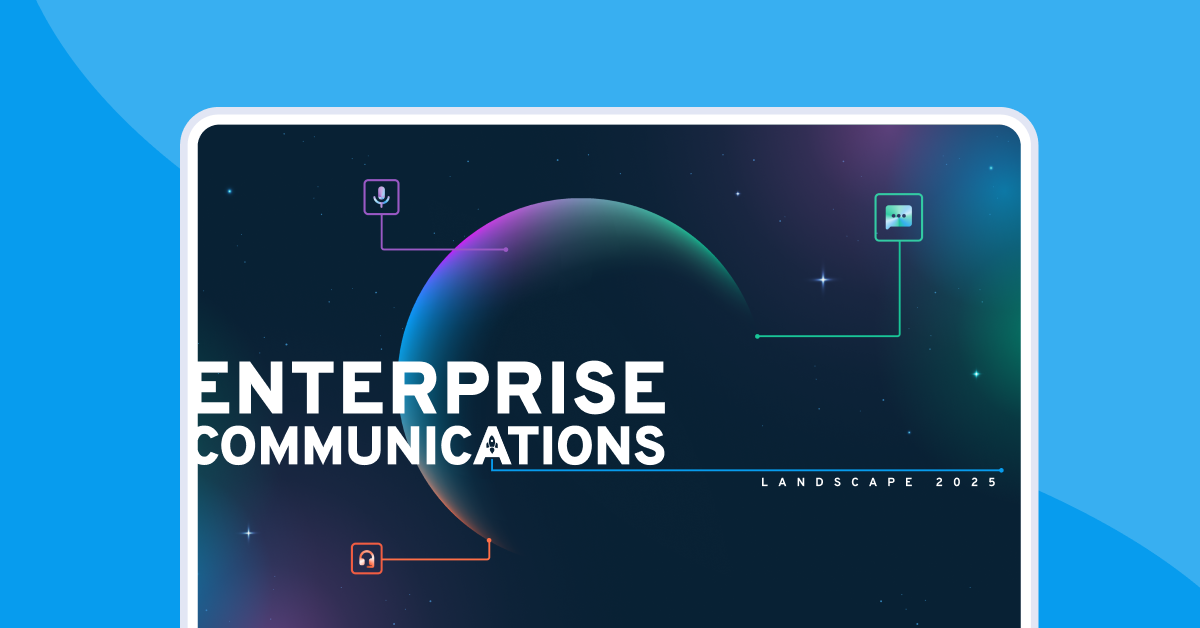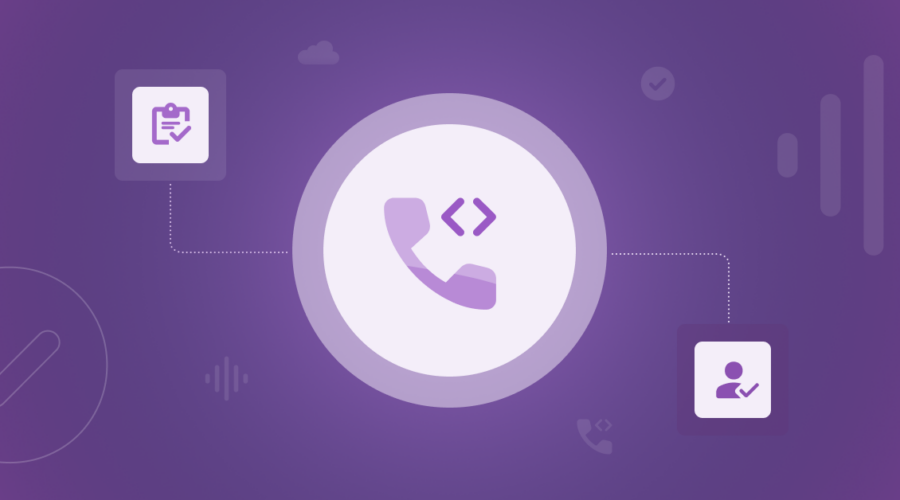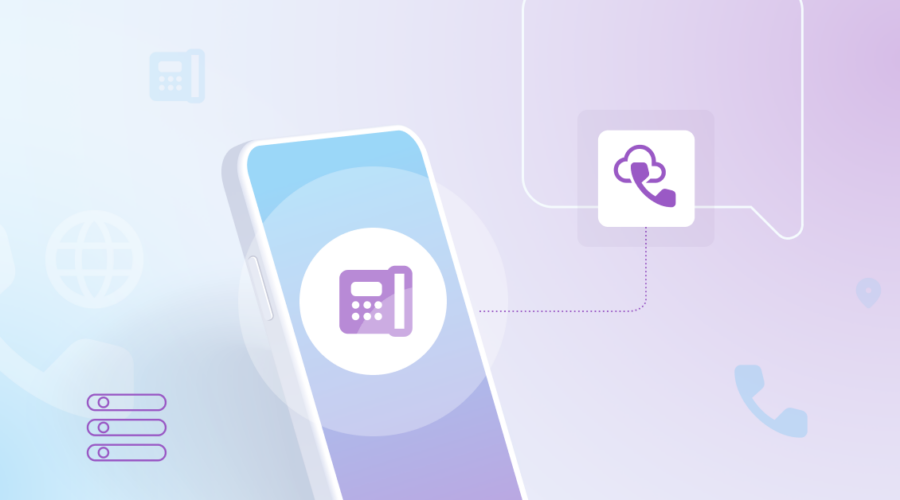If you grew up in the age before commercial-free streaming services, chances are there are at least a few toll-free telephone numbers permanently seared into your memory.
These 800 numbers were often embedded into an earworm radio jingle or television commercial and spelled out a catchy word or phrase using the dial pad.
But beyond the distinctive 800 prefix, let’s take a look at:
- What toll-free numbers are
- How toll-free numbers work
- How to get toll-free numbers for your business
What is a toll-free number?
As the name suggests, toll-free telephone numbers allow consumers to call a business anywhere in the country without having to pay long-distance rates. Instead, the business absorbs the cost of the call.
Toll-free numbers are typically associated with a specific area code, such as 800, 888, or 877, and they can be dialed from anywhere in the country without incurring long-distance charges for the caller. This is done as a courtesy to the caller, and it also benefits the business by encouraging customers to make contact by removing potentially discouraging fees.
How do toll-free numbers work?
When you dial a toll-free number, the call is routed to the organization’s designated destination, like a contact center, office, or mobile device via Voice over Internet Protocol (VoIP) or fixed phone systems. Mobile phone users who do not have unlimited plans will still be charged their carriers’ rates for the minutes used to make toll-free calls.
It’s also possible to send a text message to a toll-free phone number that is capable of receiving SMS and MMS messages. Toll-free texts can be sent at a higher MPS (message per second) rate limit than standard text messages. Bandwidth’s Toll-Free SMS lets customers use existing toll-free numbers by text-enabling them. This allows agents to handle multiple conversations with customers via SMS using the same numbers their customers already know to call.
How much does a toll-free number cost?
When purchasing a toll-free number, you’ll pay per number, plus usage per minute. Businesses that use toll-free numbers purchase them from a RespOrg, and the cost of a toll-free number can vary depending on various factors such as the provider you choose, the features and services included, and your call volume.
The cost of a toll-free number can vary greatly. With a reseller, i.e. someone that’s not their own RespOrg and re-sells RespOrg numbers, your toll-free costs would be much higher due to markups. However, if you go directly to a RespOrg for your toll-free numbers and calling, you should only pay a fraction of those costs. Because you’re going straight to the network owner and cutting out the middleman, this is the best option for high-volume, enterprise-scale toll-free calling.
Calling a toll-free number internationally
Because international calls cost a great deal more than standard long-distance calls within the country, many toll-free business phone numbers block international callers. International long-distance is possible, however, using Universal International Freephone Numbers (UIFNs), which consist of an international toll-free prefix, followed by a country code, followed by a global subscriber number. For certain business models that rely heavily on international communication, international toll-free calling allows clients all over the world to make inquiries without worrying about absorbing the cost of international calls.
Businesses may also request a personalized toll-free phone number, called a vanity number; these numbers can unify their brand, make it easier to remember the number, and spark recognition if it shows up on a customer’s caller ID, increasing the likelihood that the call will be answered. A vanity phone number may use dial pad mapping to spell out a word or acronym that is significant to the business, or it may just be an extremely simple sequence of numbers.
It’s no coincidence that the telephone number for your local taxi service is an 800 number followed by the same digit repeated seven times—savvy marketers know that, in a pinch, you are most likely to contact the phone number that is already in the front of your mind.
A history of toll-free numbers
In the days before toll-free numbers, anyone wishing to contact a business outside of their area code had to either pay long-distance charges or make collect calls. In order to complete a collect call and connect with a potential customer, a company representative had to be available to accept the charges on behalf of the business, making it impossible for long-distance collect callers to leave messages during off-hours. Worse still, while call routing technology was in its infancy, a large company with multiple locations in different area codes would be forced to have a unique phone number for each branch.
AT&T addressed this problem in 1967 by launching the toll-free phone system. Operating as a call-forwarding service, 800 numbers enabled consumers to call a business with multiple locations or branches using a single phone number, which could be customized into an easy-to-recall vanity number. Inbound calls to these 800 numbers could be routed appropriately using an auto attendant, and any long-distance charges were automatically applied to the business owner, not the potential customer.
The first toll-free numbers had the familiar 800 prefix, but by 1996 all of those numbers had been claimed and toll-free prefix codes expanded to include 888 numbers, eventually growing to include 833, 844, 866, and 877.
How to buy a toll-free number
While the FCC (Federal Communications Commission) makes and enforces the rules surrounding toll-free numbers, the work of assigning them is contracted to a corporation known as Somos, Inc. (formerly SMS/800, Inc.). Somos serves as the administrator of the toll-free phone system, and accredits and supervises RespOrgs.
Though the FCC isn’t directly involved in the process of assigning or porting toll-free numbers, it is there to step in to resolve disputes surrounding the indexing or ownership of 800 numbers. It is also responsible for creating and implementing laws that prevent businesses or individuals from taking advantage of the toll-free phone system.
The FCC enforces policies around reserving and holding toll-free numbers, ensuring that providers follow best practices to ensure numbers are available and not being warehoused.
Buying TFNs from a RespOrg
RespOrgs (Responsible Organizations) are the telecommunications providers who index and manage toll-free numbers. RespOrgs must meet the qualification criteria determined by Somos, Inc. and pass an exam in order to obtain accreditation.
If you are a business with a toll-free number, your number is owned by the RespOrg that indexed it. If you wish to change providers, your current RespOrg must release your number to your new RespOrg so that it can be ported.
Enterprise Communications Landscape 2025
Hear how 750+ IT leaders are using toll-free numbers for their business communications.

Porting an existing toll-free number to a new provider
Porting refers to transferring an existing toll-free number from one carrier to another and more specifically, in this case, the transfer of any toll-free or “8YY” number (800, 844, 855, 866, 877 and 888 exchanges). It’s a slightly different process throughout the industry, and isn’t subject to the same mandates as LNP (Local Number Portability) by the FCC. Toll-free ports are handled manually, but must be entered into Bandwidth’s customer portal similar to a standard port request. Toll-free port requests should preferably be submitted within a week of when number activation is desired.
Toll-free numbers are at risk of being disconnected if not activated within 1-2 weeks after the RespOrg has released them. In an attempt to avoid accidental disconnects, Bandwidth won’t submit a toll-free port request to the designated RespOrg until a week before the desired due date.
Toll-free port requests should be completed within 7 days, assuming there are no rejections on the order and a first available date is chosen. LOA (Letter of Authorization) submission for toll-free porting is different from standard number porting. Please see the LOA & Documentation Policy section for more information.
How to get a toll-free number for your business
Toll-free numbers are assigned on a first-come-first-served basis, so there is no way to place one on hold if you are not yet ready to reserve it. Additionally, numbers that have already been claimed by other subscribers are unavailable.
If you have the perfect vanity number in mind but find it already in use, it will likely be available under a different toll-free code. In other words, if another subscriber has already beaten you to 1-800-FREE-NUMBER, just move down the line to 833, 844, 855, 866, 877, or 888. Each toll-free code is completely unique.
Begin your order
- Log into the Bandwidth App.
- In the top navigation bar, click Numbers and select Buy Numbers.
- Under Phone number type, choose Toll-free.
- Under Any preferences?, indicate whether you have any search preferences.
- Select None if you don’t have any preference.
- Select Skip the search results; give me a certain quantity if you don’t have a preference and are just looking for a specific amount of phone numbers. This option will automatically select the numbers based on the quantity you specify and take you directly to the Place & Purchase page.
- Click Search.

Select and order phone numbers
- You’ll select all the available numbers matching your search criteria. To select numbers, you can either click on each number individually or click on one number and drag your cursor to select multiple at once.
- All selected numbers will be added to Your cart. Click Continue to proceed to the checkout.

- Once you’re on the Place & Purchase page, choose your Sub-account and the Location where you want your numbers to reside. You can also enter an optional Order description and Customer Order ID.
- Click Purchase to complete your order.
Picking a toll-free service provider
If you are ready to reserve an 800 number for your business, the first step is to choose a provider for your numbers. To pick the best provider you’ll need to evaluate them across several criteria.
Can they manage your number volume needs?
When choosing a RespOrg it’s important to consider the volume of numbers you may need. Do you need a one toll-free number? One hundred? One thousand?
For smaller businesses needing just one (or at most a handful) of toll-free numbers, pick a provider that specializes in managing smaller volumes of toll-free numbers. If, however, you need to secure a higher volume of toll-free numbers, you’ll want to work with a provider that specializes in working with larger organizations. Bandwidth focuses on enterprise volumes of toll-free numbers.
Are they a carrier and a RespOrg?
Not all RespOrgs are carriers. If you secure your toll-free numbers from a RespOrg that can’t also provide network services you’ll need to also contract with a carrier for your voice or messaging services on that number. Bandwidth is both a RespOrg and a carrier, giving you a single solution for acquiring and powering your toll-free calling and messaging.
There are two ways to get a toll-free number from Bandwidth: Ordering a new toll-free number, and porting an existing toll-free number.
Do they have disaster recovery?
Toll-free networks, like everything else, experience outages. Consider carriers that have contingency plans, like toll-free disaster recovery. This means you can safeguard your traffic and don’t have to worry about phone calls dropping during an outage.
Get toll-free numbers for your business with Bandwidth
Want to learn more about how to order phone numbers with Bandwidth? Visit our support center article for details on searching and ordering numbers in the Bandwidth App.




